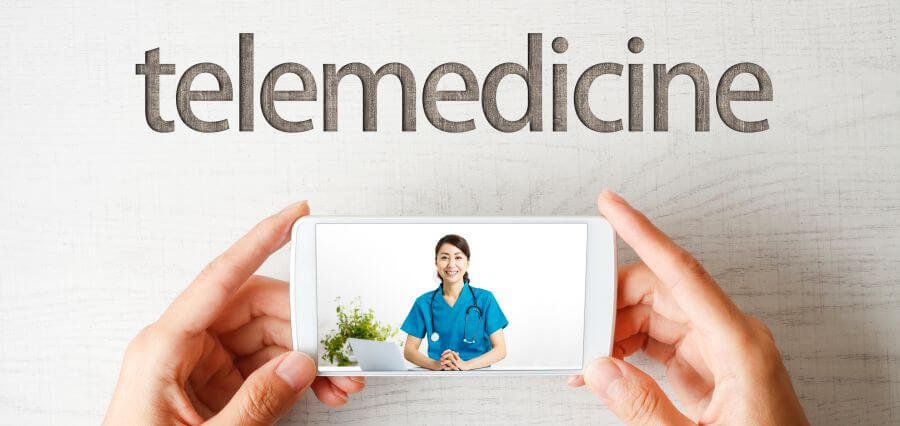A short time ago, the interplay of life and technology would have been unimaginable. Nevertheless, within a period of just ten years, technology has not only impacted our lifestyle, but it has also changed the way we avail medical care too. One of the most revolutionary moves in modern medicine is telemedicine’s expansion. Many people would want to know what telemedicine is, and the answer will be that it is a treatment technique that involves the use of a communication device, for example, a video call or phone consultation, for connecting a patient to a doctor working at a different location instead of physically visiting the doctor. Hence, it is no longer a must for patients to travel long distances for getting medical advice, monitoring of diseases, or even getting medicines, but they can perform all of these activities while they stay at their houses.
Telemedicine is not simply a trendy word but a concept that links the obstacles of healthcare, such as the scarce availability of professionals, long waiting times, and the rapid increase in expenses. Instead of a rhetorical question—what is telemedicine doing to revolutionize healthcare?—the answer is given by the fact that it is enabling easy, quick, and accessible healthcare of the required quality to the people who are residing in any part of the world.
What is telemedicine, and why does it matter?
Remote healthcare delivery that includes doctor-patient interaction sans physical co-presence refers to “telemedicine.” The idea has always existed; it was just concentrated in big hospital setups and research centers for years. The scenario of everyday healthcare has changed with the advent of internet connectivity and the use of smartphones in healthcare.
A situation of a mother who will have to wait till morning to talk to the doctor about her kid and an old patient in a remote community comes to mind, where it is difficult for them to go to the hospital. Through telemedicine, they both can get immediate access to the right doctors without any time delays. Telemedicine, by removing the limitation of physical distance, ensures healthcare provision even if a location is not nearby.
Understanding the Benefits of Telemedicine
Telemedicine has an extensive scope of benefits. It makes medical care more accessible, saves time and money, and assures prompt medical interventions. Basically, it can be the most trusted and efficient healthcare source for people living in remote areas. Similarly, frequent hospital visits by chronic disease patients (diabetics, hypertensives, and asthmatics) can be downgraded by the use of telemedicine, where they can have routine checks or consultations via telemedicine.
From the perspective of a doctor, telemedicine is a great tool to manage a larger patient population effectively. It is the reason for the doctor to keep in closer contact with the patients, issue the needed medication in a safer way, and perform constant monitoring through wearable devices. Also, telemedicine doesn’t completely transition from emergency rooms to hospitals because it helps in the reduction of unnecessary visits to emergency rooms. All the above-mentioned benefits have been intrinsic in the transition of telemedicine from merely being an alternative to becoming a necessity in contemporary healthcare.
What is Telemedicine Doing During a Crisis?
A situation when telemedicine was at its strongest point, and its quality was unmistakingly visible, was during the COVID-19 pandemic. When the world was in lockdown and social distancing was a must, many doctors and patients who used to have physical appointments were waiting for the solution. Instead of waiting in crowded clinics, telemedicine gave the patients the opportunity to reach the exact professional they needed but in the safety of their homes.
This stage firmly cemented the status quo of the indispensability of the telemedicine system in public health crisis management. Telemedicine helped patients and hospital staff to stay protected from the virus by not exposing them to risks and by freeing up hospital beds for only the urgent cases. Therefore, even as the pandemic has subsided, the take-up of telemedicine has not weakened, thereby indicating the permanency of telemedicine in the future of healthcare.
What is Telemedicine’s Role in Mental Health?
The treatment of mental illnesses was historically not given the necessary attention, mainly due to social stigmas or the unavailability of professionals in the area. Once again, telemedicine has become a game-changer that has broken down the barriers. Virtual therapy sessions, counseling, and online mental health platforms make it easier and more comfortable for people who are looking for help to keep their privacy. Patients are no longer required to travel long distances or be concerned about their privacy being invaded.
For example, patients directly exposed to anxiety, depression, or stress-related disorders will benefit most from the new pattern of treatment, which lowers the access threshold to consultation. Hence, healthcare is a sector that is beyond the physical, and in this case, emotional and psychological health are given equal importance.
The Future of Telemedicine
As we dive deeper into the concept of telemedicine and its future, it becomes evident that telemedicine is not only a fleeting trend but rather a game-changer with a lot of potential. Basically, telemedicine is going to proceed with the advancements of technological gadgets, robotic health interventions, and remote patient monitoring spheres. You might see the future wherein the question is not, “Can you and your doctor meet virtually immediately?” rather, it is, “How do you hear your doctor with your smartwatch’s help?”
Moreover, the insurance sector and policymakers are also getting in step with the model by becoming convinced that telemedicine qualifies as an accountable and reimbursable service. Undoubtedly, this move will likely be a turning point that will generate the impetus for the mainstreaming of the system rather than being one of the choices. The more it gets exposed to by doctors and patients and they realize its applicability, the closer it gets to reshaping global healthcare delivery.
Overcoming the Challenges
Conversely, telemedicine is also subject to the same fate as any other innovation in the sense that it has to overcome some challenges. Some patients might not have reliable internet access or might find the use of the digital tools difficult. Worrying about the security and privacy of sensitive data might be one of the main causes of anxiety for patients, and their concerns should be addressed properly. Furthermore, some diseases or conditions can only be physically examined or treated, and telemedicine is not able to do so completely.
Still, these shortcomings are not necessarily the most pronounced compared to the almost unbelievable milestones that have been achieved. Yet, with developments in technology and regulation, telemedicine is on the verge of being a necessary part of the current medicine practice.
Conclusion
So, telemedicine is, if not the future of healthcare itself, what? It is the connection between patients and doctors in a swiftly digital world. It is a system where limits such as distance, time, and norms do not hinder the giving of care. The great part of telemedicine—easy, accessible, and cheap—makes it possible for us to gain on health and well-being exponentially. By the time telemedicine will have further progression, telemedicine will not be the sidekick to classical medicine but the one who completely changes the game, making medical help be just a fingertip away for anyone who needs it.









